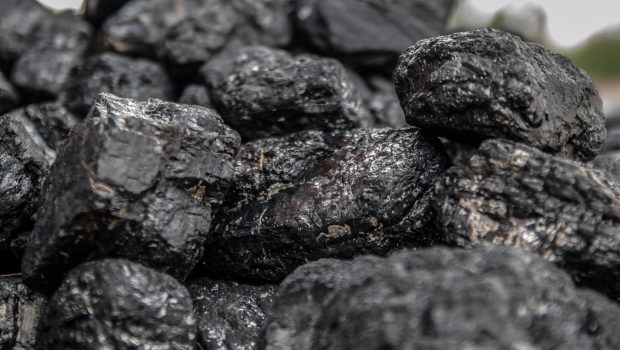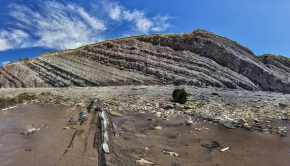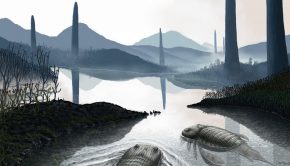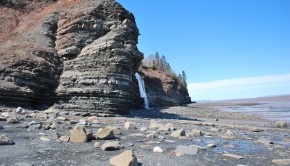Episode 86: Coal
The Carboniferous (Latin for ‘coal-bearing’) is a period of the Paleozoic Era named after the massive accumulations of coal that were formed globally during this time. These coal deposits were the fuel for the Industrial Revolution and continue to be an important economic resource to this day.
For this interview, we asked Standford University’s Prof. Kevin Boyce to introduce us to coal and to tell us how it’s formed and what it’s made of. We then concentrate on determining why the Carboniferous was the period with the largest coal deposits when we know that forests existed in other periods too. Finally, we look at the impact that coal production and subsequent exploitation has had on the planet.
Podcast: Download (Duration: 46:44 — 65.1MB)

Carboniferous plant fossil, a trunk cross-section of an arborescent lycopsid, showing how plants can be preserved without compression in a carbonate nodule that otherwise would have been destroyed in the surrounding coal.
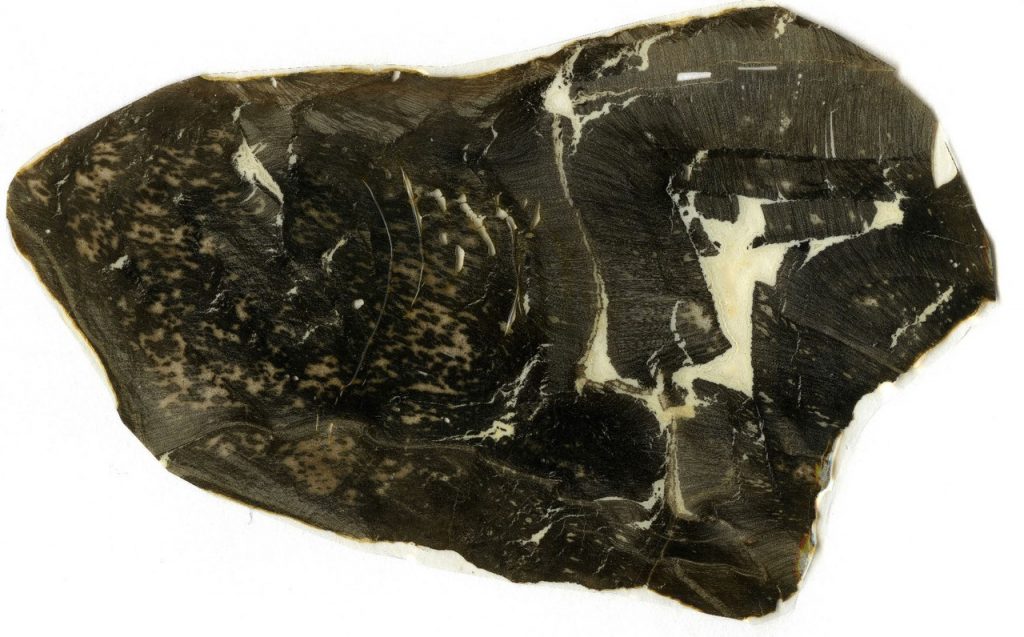
Devonian wood, Callixylon, in cross section. The mottled texture on the left-hand side of the fossil reflects fungal rot. This specimen comes from some of the earliest trees and predates the great abundance of coal that comes later in the Carboniferous. Specimen from the collections of the Smithsonian NMNH.
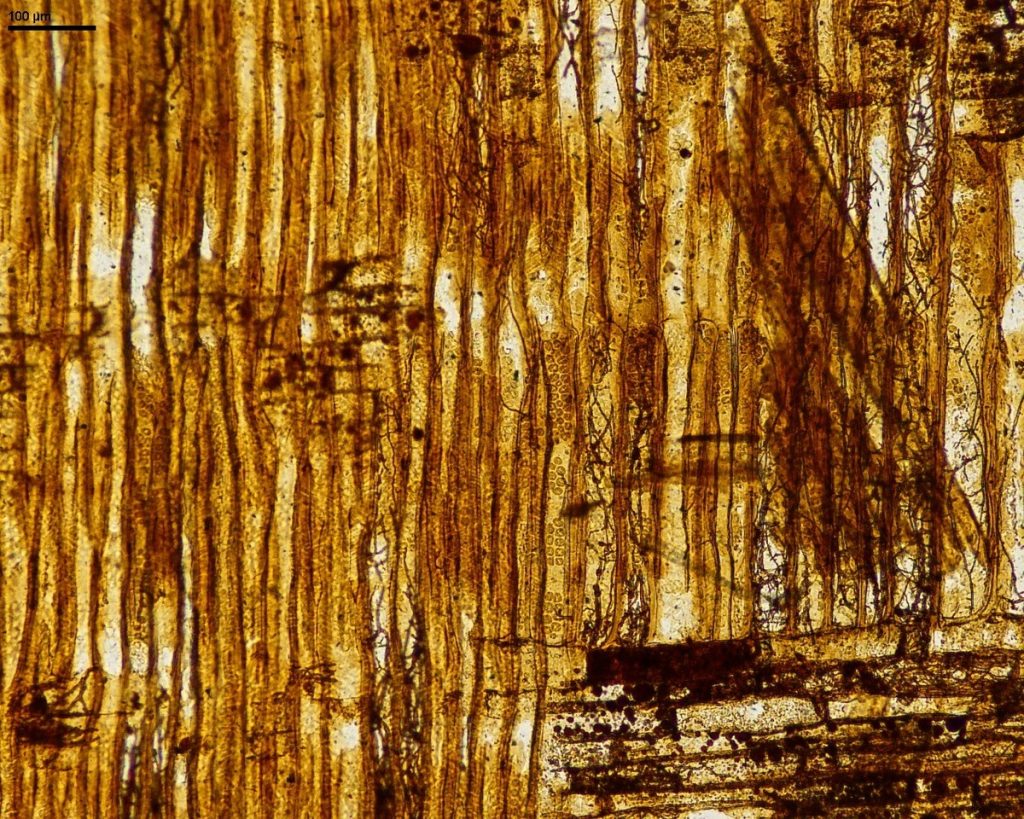
Microscope image of a different specimen from the same Devonian Callixylon wood material. The overall vertical fabric reflects the water conducting cells of the wood. Darker, irregular filaments within the plant’s water conducting cells (for example, in the upper right) are fungi. Specimen from the collections of the University of Michigan Museum of Paleontology.
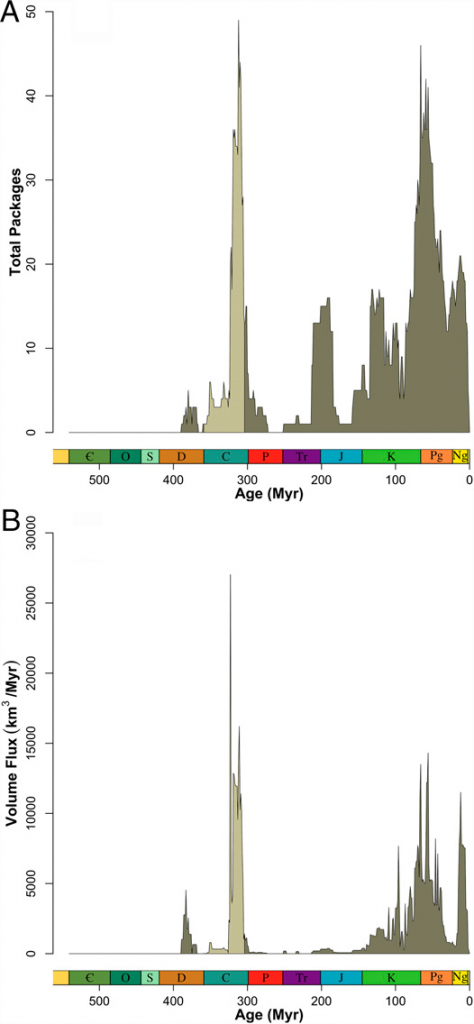
Terrestrial, North American organic sediment (coal, peat, lignite, anthracite, and tar) accumulation through time. Sedimentation metrics include (A) the number of organic rich sedimentary successions per million years, and (B) organic-rich sediment volume burial flux measured in cubic kilometers per million years (derived from stratigraphic thickness, depositional area, and deposition duration). The light-coloured section under the curve indicates the time interval over which lycopsids played a dominant role in North American wetlands. Thus, lignin would have been of secondary importance during this period, aside from in a few interspersed floral assemblages in which woody cordaitalean seed plants with higher lignin contents were codominant. Consequently, lignin is expected to have been a greater contribution to coal formation both before and after this interval of lycopsid dominance. Coal production being the result of a temporal lag between the evolution of lignin synthesis by plants and lignin decay by fungi is inconsistent with (i) the lack of correspondence between coal production rates and transitions in biochemical inputs, (ii) the sharp, short-lived peaks in Carboniferous coal production, and (iii) the return to high levels of coal production in the last 100 million years.

Kevin Boyce (left) Matt Nelsen (right) examine Carboniferous-era petrified wood fossils. (Image credit: Ker Than)

